You may not find this terribly rewarding unless you're included here, so this is a good time for casual and random browsers to turn back before they get too caught up in the sweep and majesty of the proceedings and can't let go.
We were visiting the Veneto region north of Venice earlier this spring, and now we're back to see some more of what we missed farther south.

Montagnana, the Città Murata, is a smallish town of about 11,000 citizens 35km south of Vicenza in the province of Padua. The old town is encircled by one of the best preserved city fortifications in Europe.

It's just up the road from the Ca' Vejo in Megliadino San Vitale, and on Sunday 14 May 2017 it's the first stop on our sightseeing itinerary. This is the eastern gate and the Castello di San Zeno.
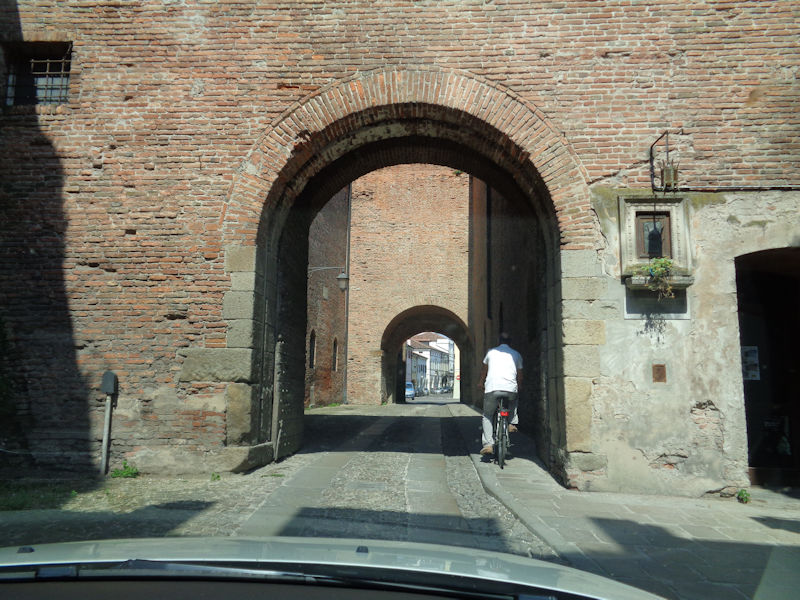
A formidable gate and a narrow one; luckily, there are traffic lights at either end. It's our turn.

This is the Castle of San Zeno from inside the walls, with the Torre Ezzelina, built in 1242 on the orders of Ezzolino III da Romana ('il tiranno'), the Emperor Frederick II's Imperial Vicar in the region and in the 1230s to 1250s the reputedly ruthless conqueror of much of the Veneto.
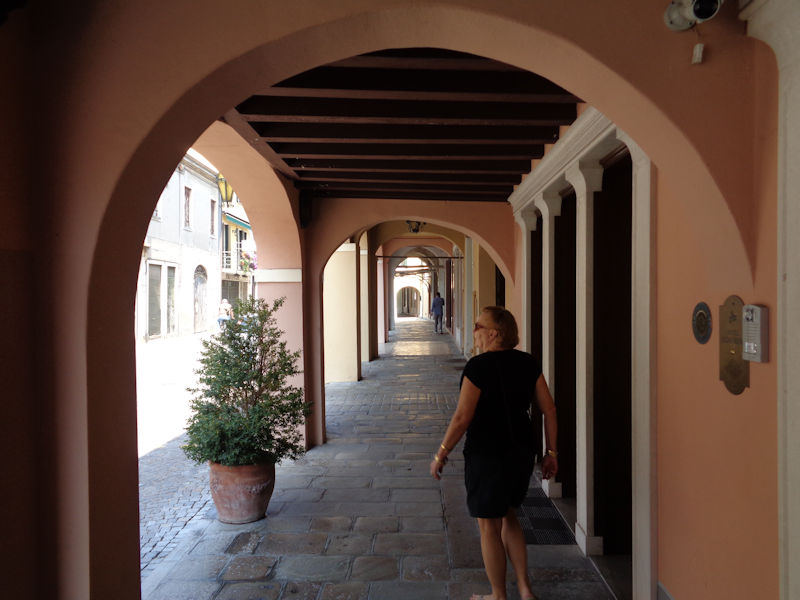
Montagnana, in the fertile plain between the river Adige and the Euganean Hills, was inhabited from at least the 4th millennium BC, but was developed by the Romans to help defend access to a bridge over the Adige (though in AD 589 a flood diverted the river farther to the west and south). Already a prominent village under the Lombards, by the 11th century it had passed to the ruling family of nearby Este, who provided early fortifications. The city was conquered by the Ezzelini in the 13th century, who built the San Zeno Castle and tower over previous defense works, and then by the Carraresi lords of Padua in 1260, who (with a brief interlude under the Della Scala family of Verona 1317-1337) constructed the rest of the city walls and the fortress of the Alberi on the west side of town. The Venetians took over Montagnana in 1405, along with most other towns in the region.
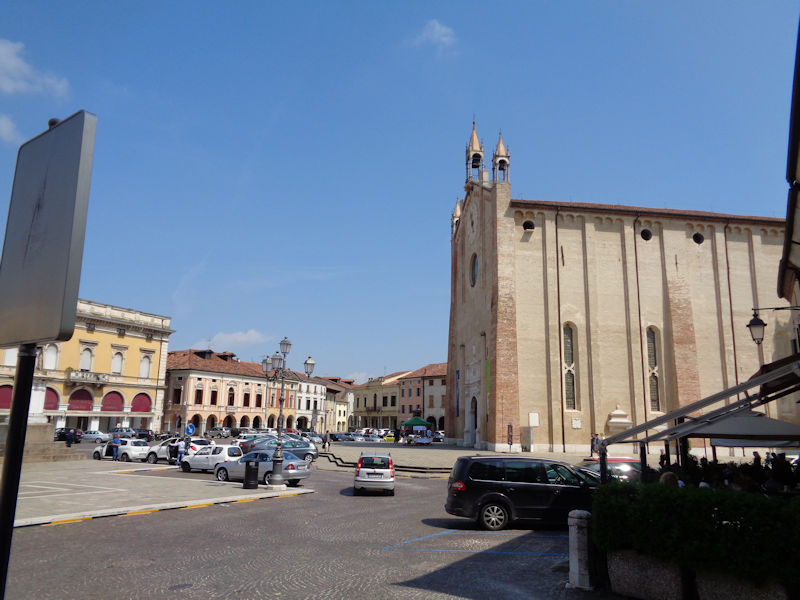
First things first: the Piazza Comunale and its Duomo di Montagnana, or Cathedral of Santa Maria Assunta. It's almost noon (many Italian churches close from noon to 3 or 4), so we're scuttling along awkwardly. Oh God, it's Sunday -- they'll close at noon for good.

A sidelong glance across the Piazza Comunale, or Piazza Vittorio Emanuele II, as we hasten past.

-- Wait up! -- No! Can't!
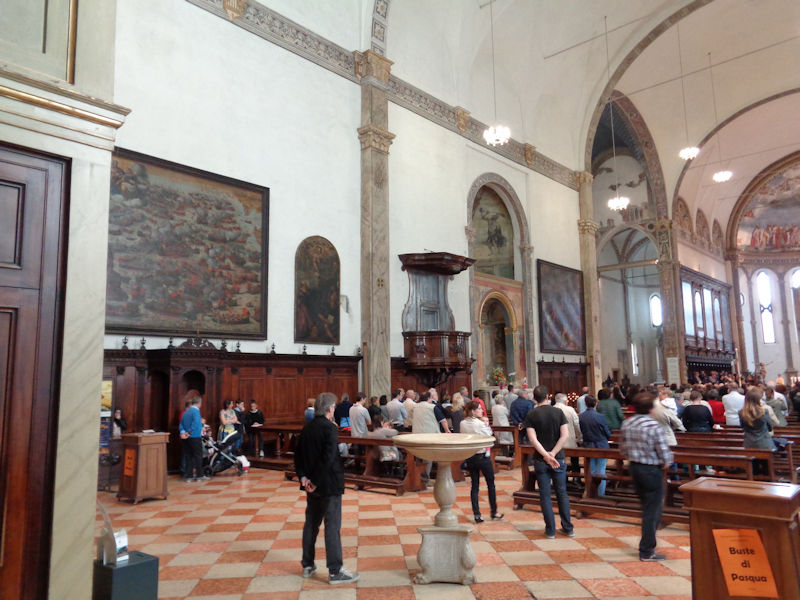
The door's open, we dart in, but the religious people are still here! No consideration. We retire discreetly.
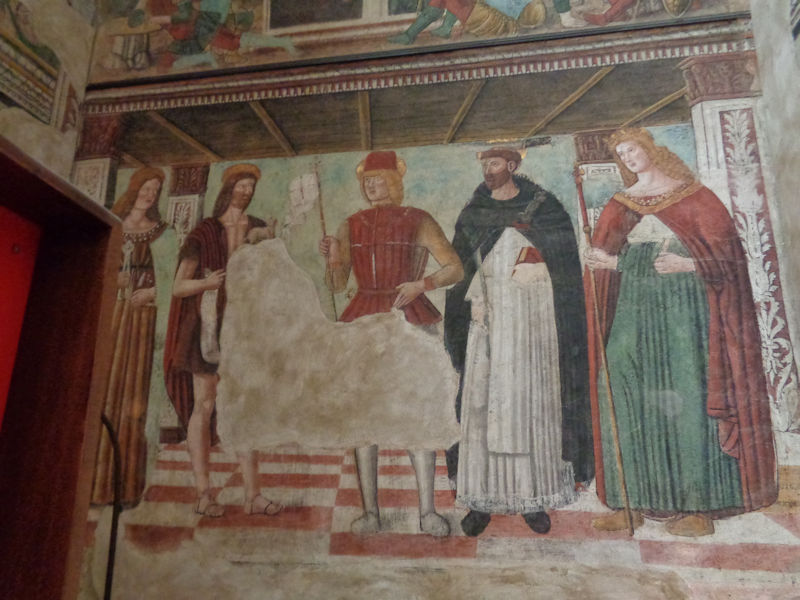
But not before we get a quick snap of a neat fresco in case we never get to come back

Our new plan is to circle all round in the neighborhood and dash in when the credenti file out.
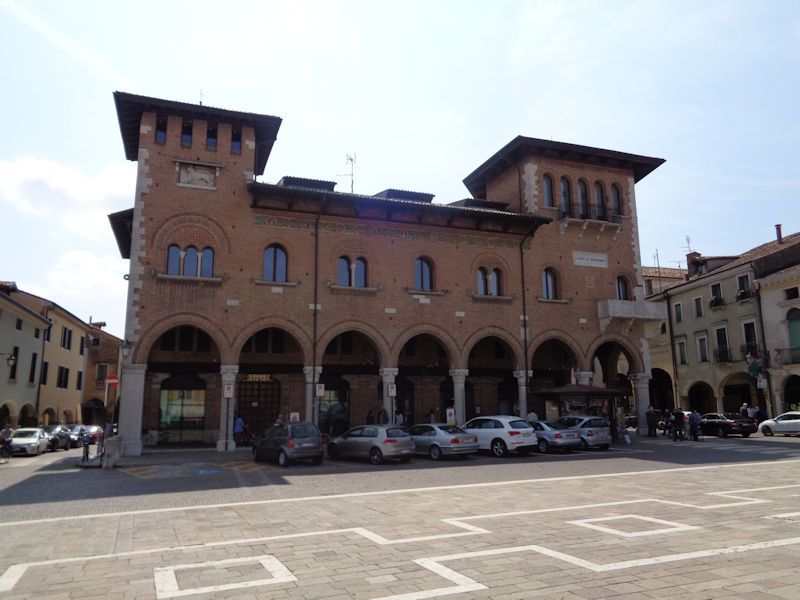
The elegant Cassa di Risparmio savings bank, a reproduction built in 1924 after a fire destroyed its predecessor

King Vittorio Emanuele II and his piazza, and the Duomo

A quiet alley leading to another church

It's the Church of St Francis, with the typical Franciscan boring façade -- the church and convent were first mentioned in 1350 but are considered likely to be much older.

The inside's a bit boring, too.
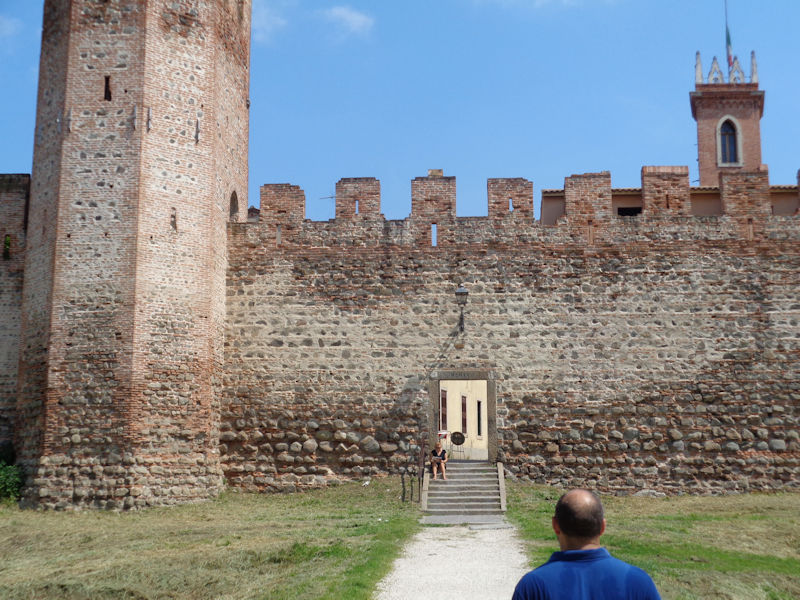
We're perusing the city's brochure for sightseers, out a nearby pedestrian gate drilled through the wall in 1925.

The present city walls are said to have been begun in 1337 by Ubertino I Novello (called Ubertinello) da Carrara, Lord of Padua, two kilometres around with 24 polygonal towers, and with a fortress called the Rocca degli Alberi at the western end, built in 1360-62 by Francesco I il Vecchio da Carrara of Padua. The Ezzolino Tower at the east end of the city walls is in the background.

The ample moat, 20 to 40 metres wide, kept siege machines and sappers away from the city walls and was fed after 1277 by a canal dug in from the river Frassine that runs east towards Este.
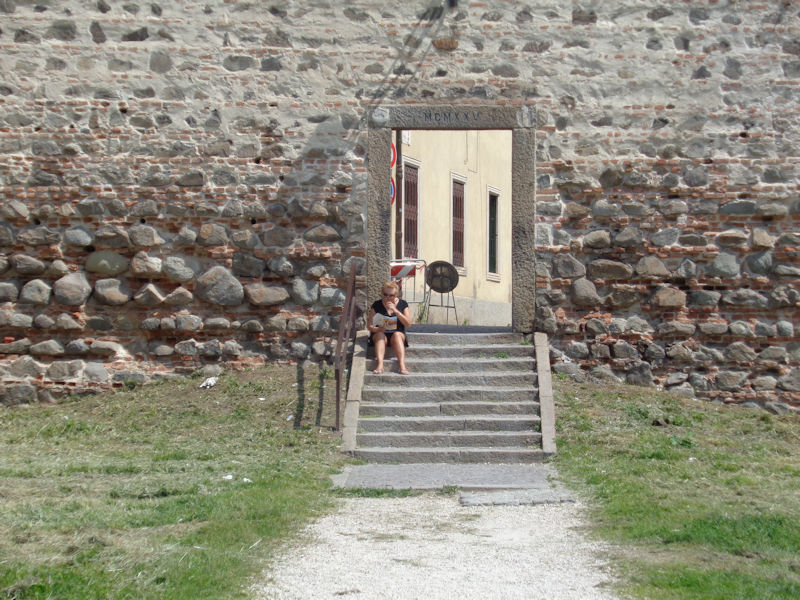
A new plan will soon be forthcoming.
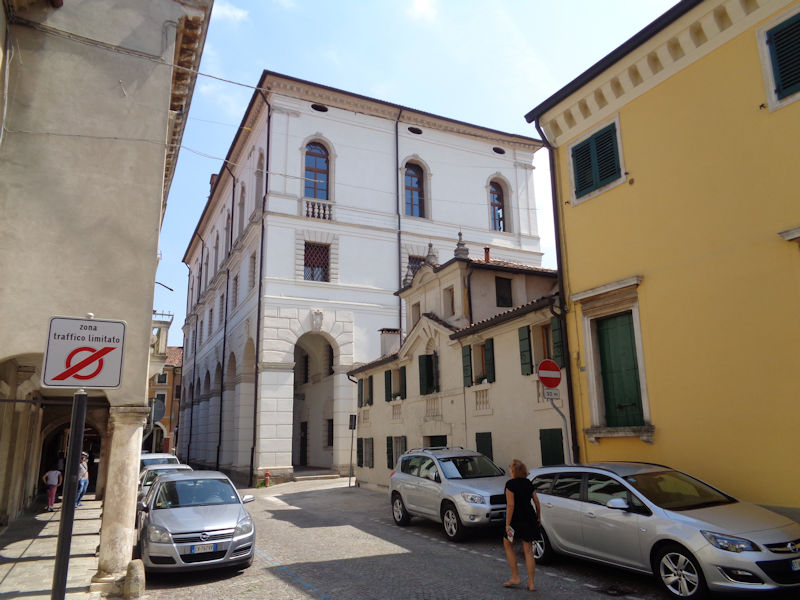
We're bounding off with a new destination in view, as we're coming up to the back of the Sanmicheli Palace.

The city hall on the central Via Carrarese, called the Palazzo Sanmicheli because its first incarnation, in 1538, has been attributed to the Mannerist architect Michele Sanmicheli of Verona, but it was partially renovated after a fire in 1593.

The Via Carrarese facing the Ezzolino Tower
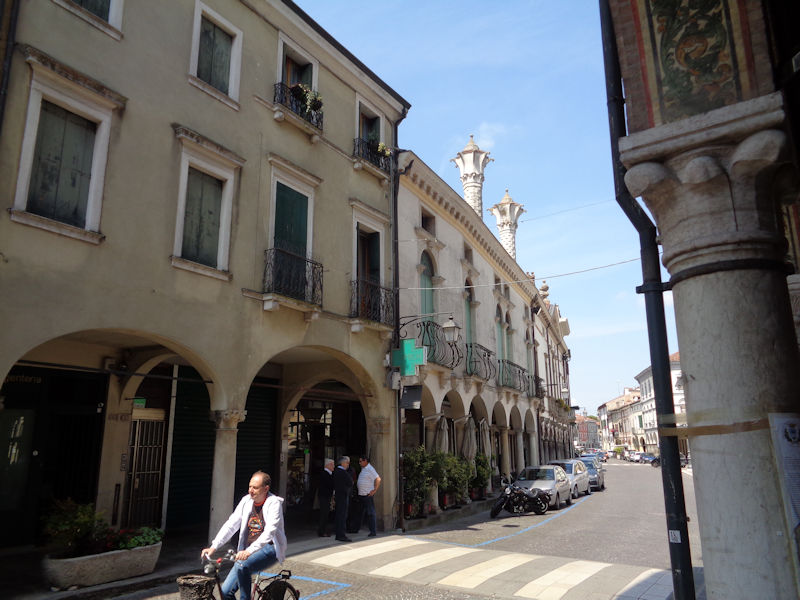
The Via Carrarese at the southern end of the Piazza Vittorio Emanuele II. After Montagnana raised the white flag and surrendered to Venice in 1405, it lost much of its strategic importance but prospered economically, peppered with fine palazzi put up by rich aristocrats of the Veneto.

A Tshirteria
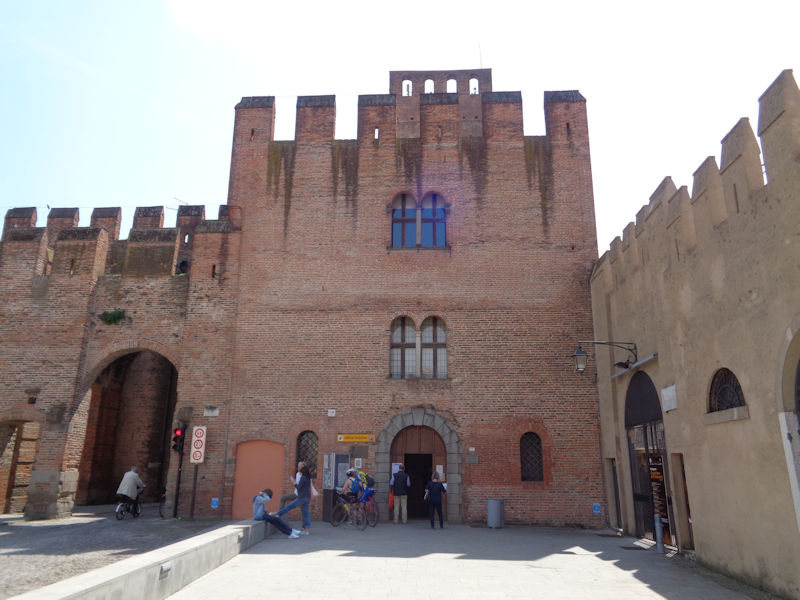
The Castello di San Zeno, with the civic museum and entrance to the tower. The museum has just closed for the day (it's noon, after all), but we can dash up the ca.40-metre Torre Ezzelina if we move it along a bit.

Alley-oop
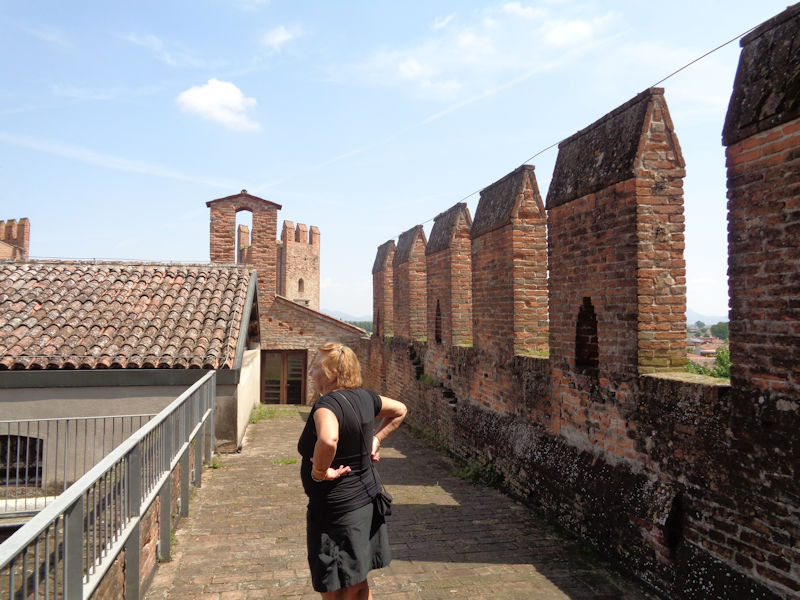
Crenellations along the top of gatehouse; more tower steps to come.
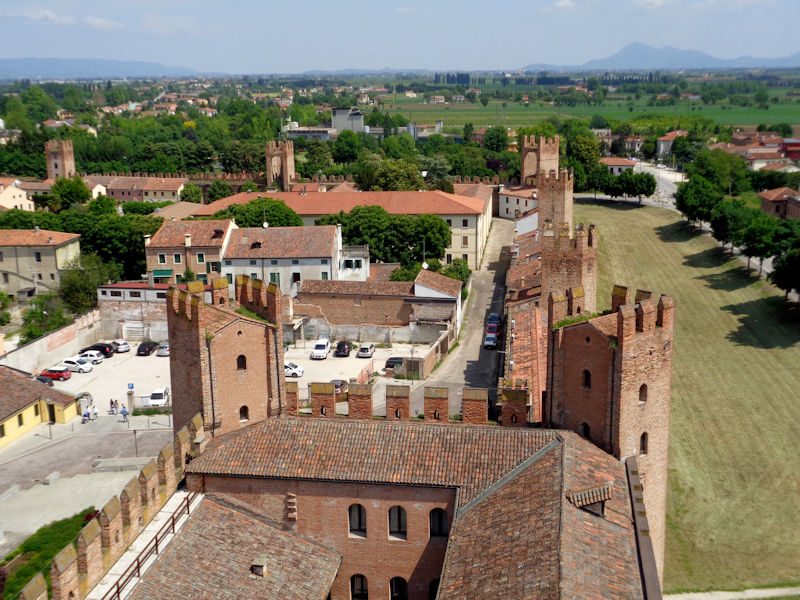
Looking northward from the top of the tower (that's our cute little Volvo down there in the carpark)

Looking across at the southern and western walls, with the belltower of the Chiesa di San Francesco

Along the Via Carrarese and southern end of the Piazza di Vittorio Emanuele II
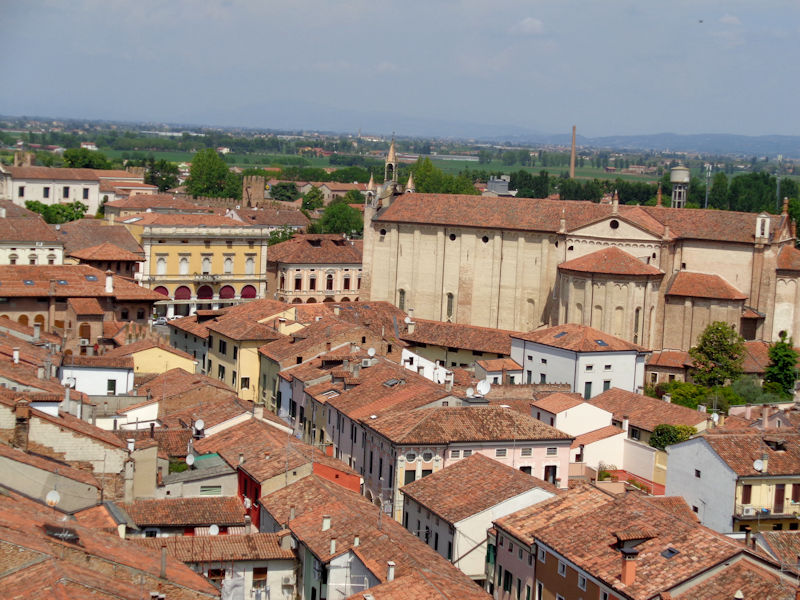
The Duomo from the tower
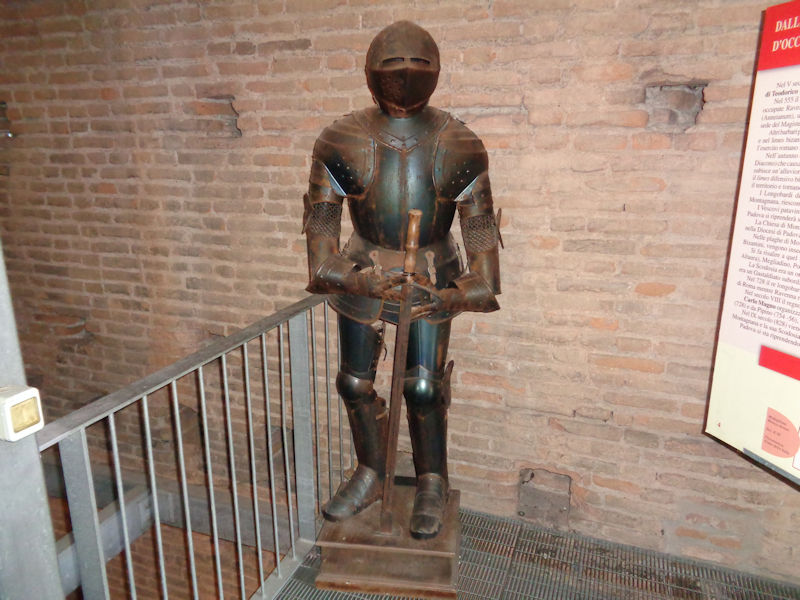
A short knight

Back to the main square for another try at the Duomo
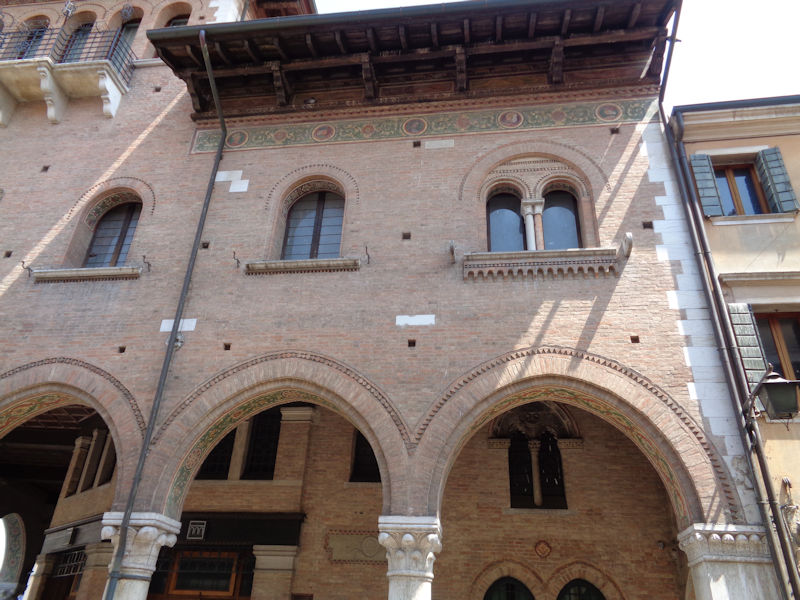
The Cassa di Risparmio di Padova e Rovigo, local branch


His Majesty V. E. II

It's over! They're coming out! (That nice doorway has been attributed to Sansovino.)

Our good luck is boundless -- they're still doing a few baptisms. If we can just blend in. . . . The cathedral was built between 1431 and 1502 and shows both late Gothic and Renaissance attributes.

The main altar in the presbytery. In the half-dome is the Assumption into Heaven of the Virgin Mary, by Giovanni Buonconsiglio, 1518; behind the altar is the Transfiguration of Christ by Veronese, 1555, but we lucked onto a better photo when we returned a few days later, which we will provide in due course.

A candle for a friend
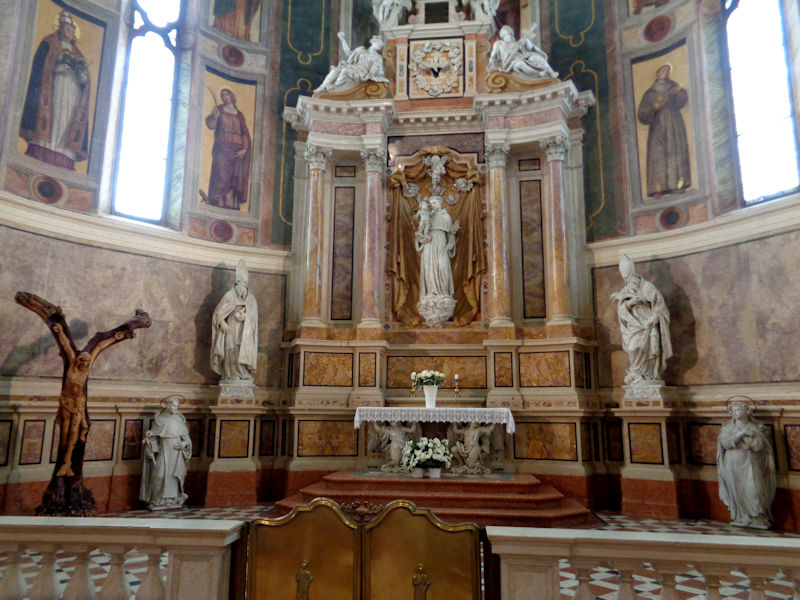
A side chapel to the right of the altar, dedicated to St Anthony with early 18th century sculptures
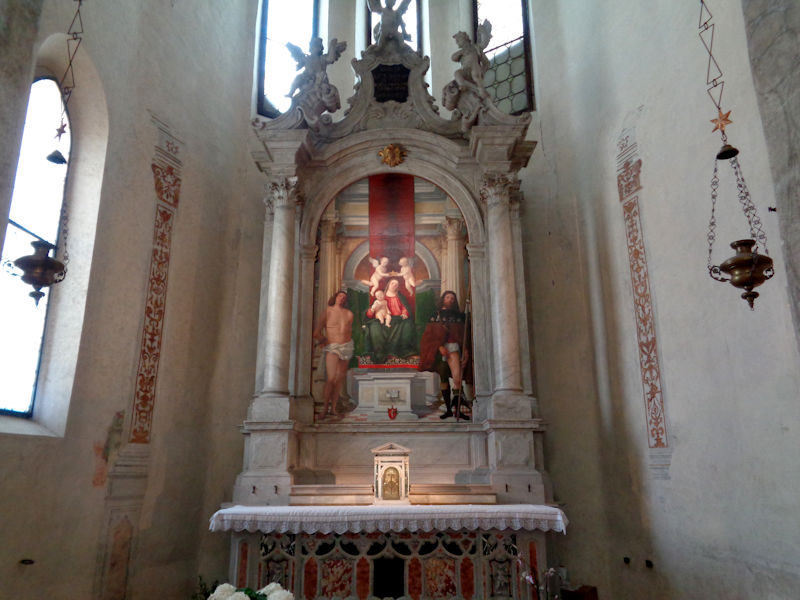
A side chapel in the nave, dedicated to St Catherine with the perennial suffering twins Saints Sebastian and Rocco
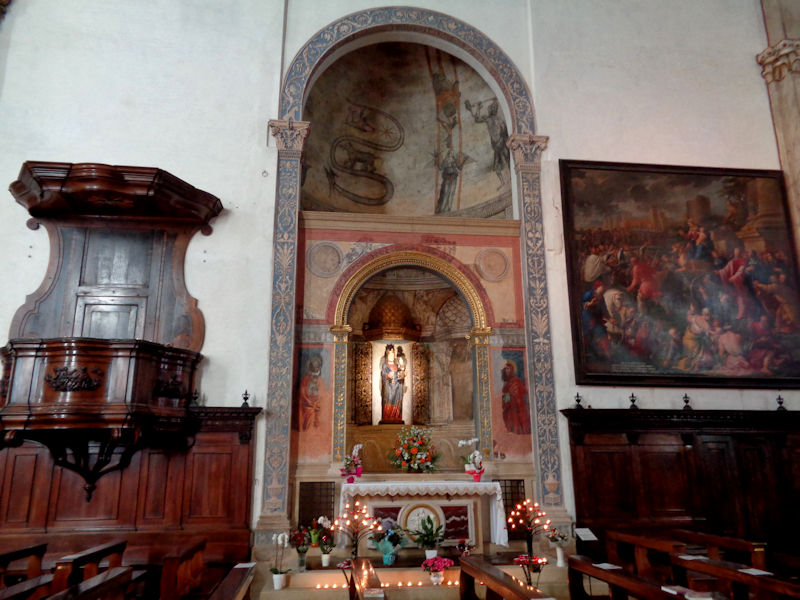
The mysterious Altare del Rosario, of which, also, we got better photos a few days hence. There are two by Giorgione here as well, which will also be along soon.

The Piazza again
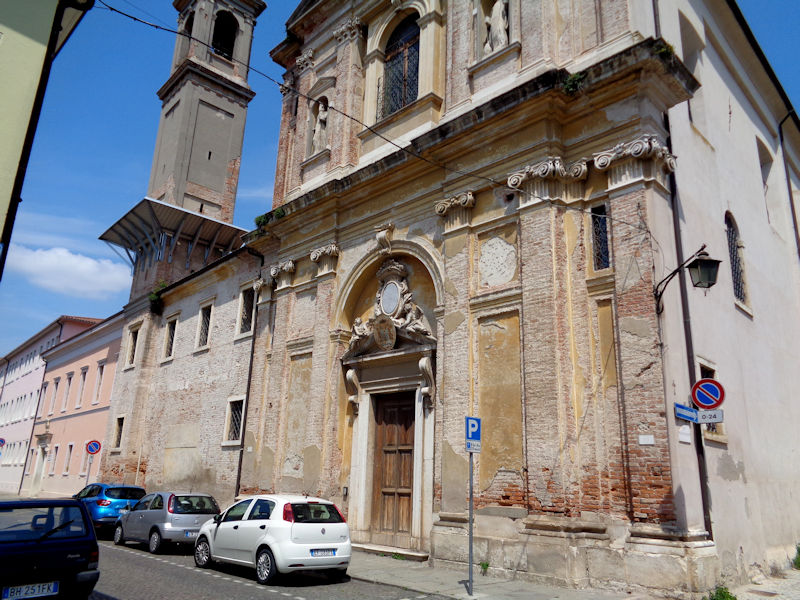
The Chiesa di San Benedetto, early 16th century, near the western gate

The Rocca degli Alberi and the western gate, built on the orders of Francesco the Elder of Padua in 1360-1362, originally on an island surrounded by moats. The tower, or mastio, could only be reached through a complex of drawbridges and portcullises.
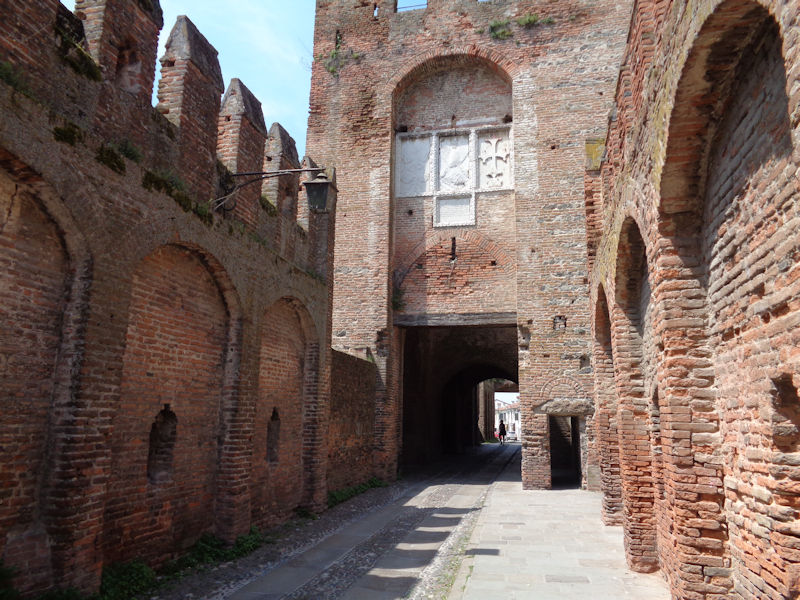
The formidable western gateway

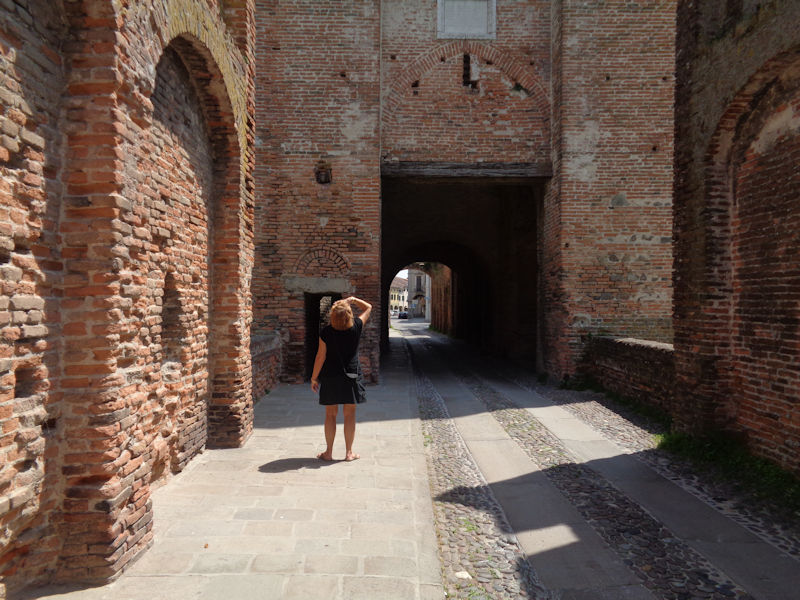

The Palazzo Magnavin-Foratti, 15th century. It's traditionally said to have been donated by Venice to their famous condottiere or mercenary military commander, Il Gattamelata (the 'Speckled Cat', aka Erasmo da Narni), for his services. Donatello's equestrian bronze statue of him, 1453, outside the Basilica of St Anthony in Padua, is said to be the first life-size bronze equestrian statue since classical times.

It's time to leave. We have promises to keep.

Next: A first look at Este














 Dwight Peck's personal website
Dwight Peck's personal website
































































